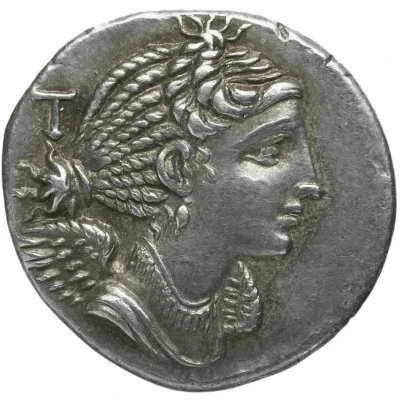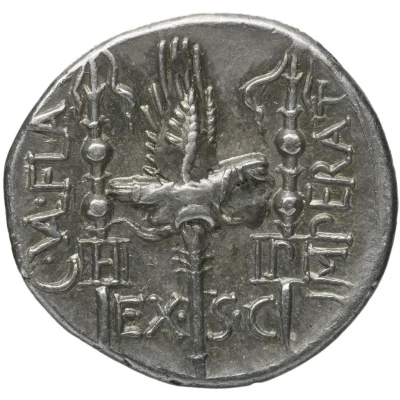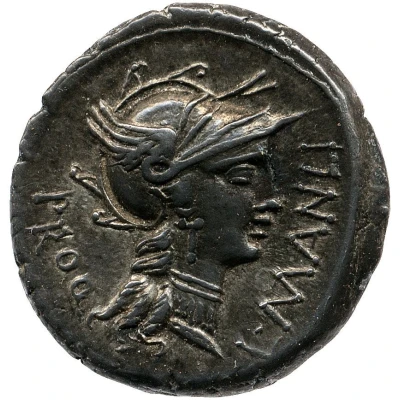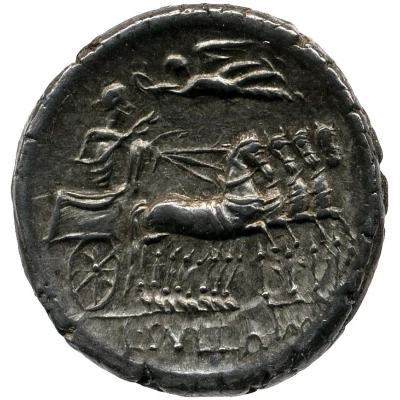
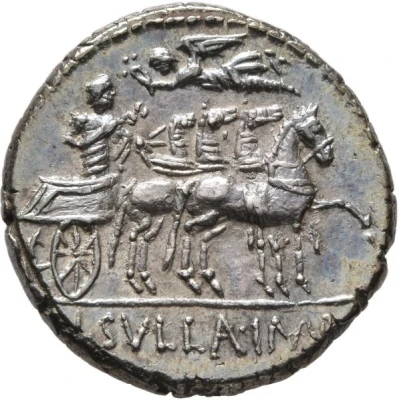

© Leu Numismatik
Denarius Manlia: Lucius Manlius Torquatus; L•MANLI T PROQ / L•SVLLA•IMP 82 BC
82 BC year| Silver | 3.93 g | 18 mm |
| Issuer | Rome › Roman Republic (509 BC - 27 BC) |
|---|---|
| Period | Republic (509 BC - 27 BC) |
| Type | Standard circulation coin |
| Year | 82 BC |
| Value | Denarius (1) |
| Currency | Denarius of 16 Asses (141 – 27 BC) |
| Composition | Silver |
| Weight | 3.93 g |
| Diameter | 18 mm |
| Shape | Round (irregular) |
| Technique | Hammered |
| Orientation | Variable alignment ↺ |
| Demonetized | Yes |
| Updated | 2024-10-06 |
| Numista | N#401130 |
|---|---|
| Rarity index | 97% |
Reverse
Triumphator, crowned by flying Victory, in quadriga, right, holding reins in left hand and caduceus in right hand. Border of dots.
Script: Latin
Lettering: L•SVLLA•IMP
Unabridged legend: Lucius [Cornelius] Sylla Imperator
Comment
Babelon (Manlia) 7 and (Cornelia) 42.
Interesting fact
The Denarius coin was minted during the Roman Republic, a time when Rome was still a republic and not yet an empire. The coin features an image of Lucius Manlius Torquatus, a Roman consul and military leader, on one side, and an image of a goddess, likely Juno, on the other. The coin was made of silver and weighed 3.93 grams. Interestingly, the Denarius was the main currency used in Rome during this time period and was widely used for trade and commerce. It was also used to pay soldiers and civil servants, and was a symbol of Roman power and influence. The fact that this coin features an image of a prominent Roman leader and a goddess highlights the importance of religion and politics in Roman society at the time.
